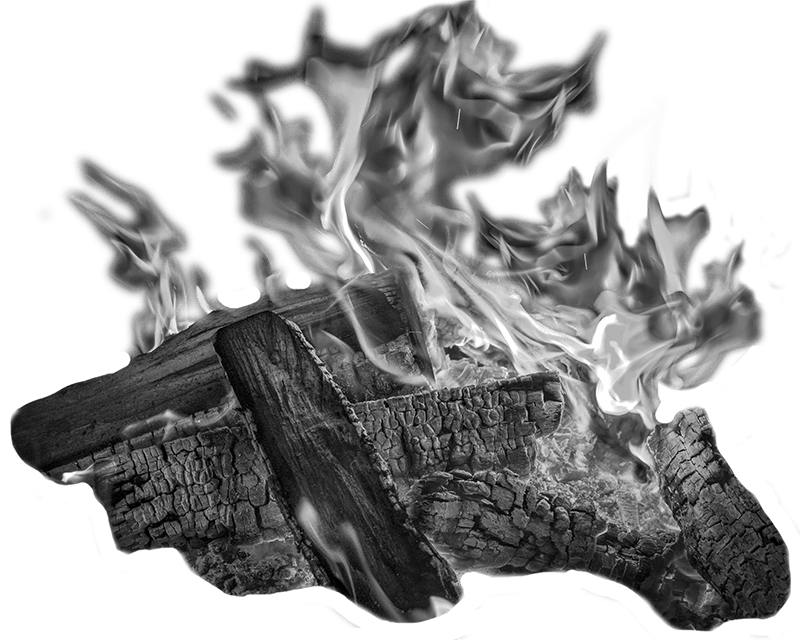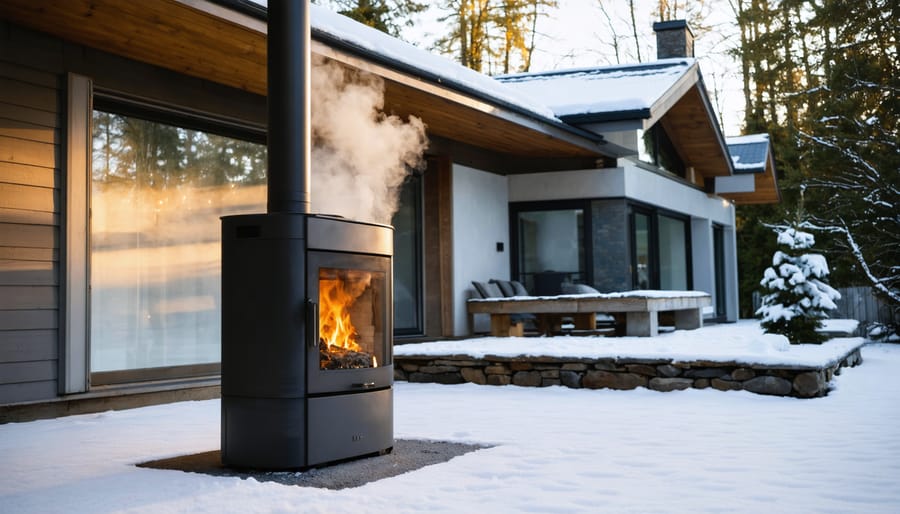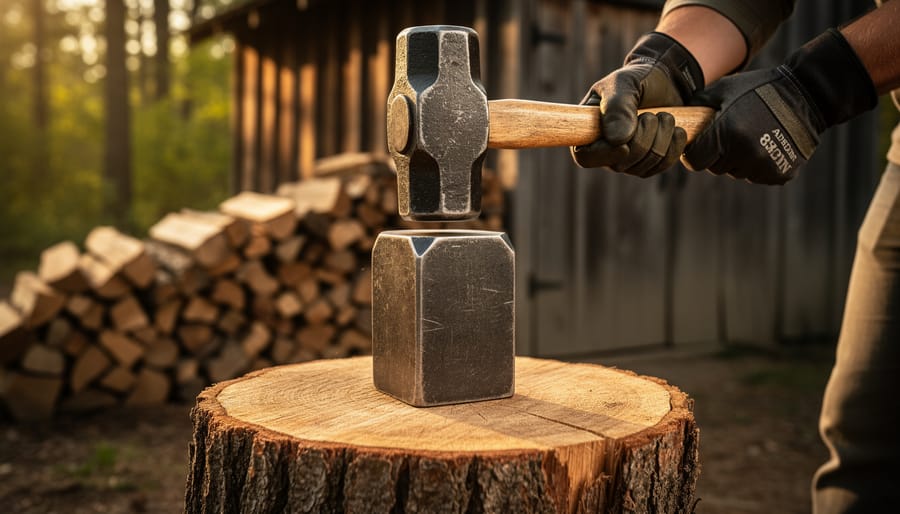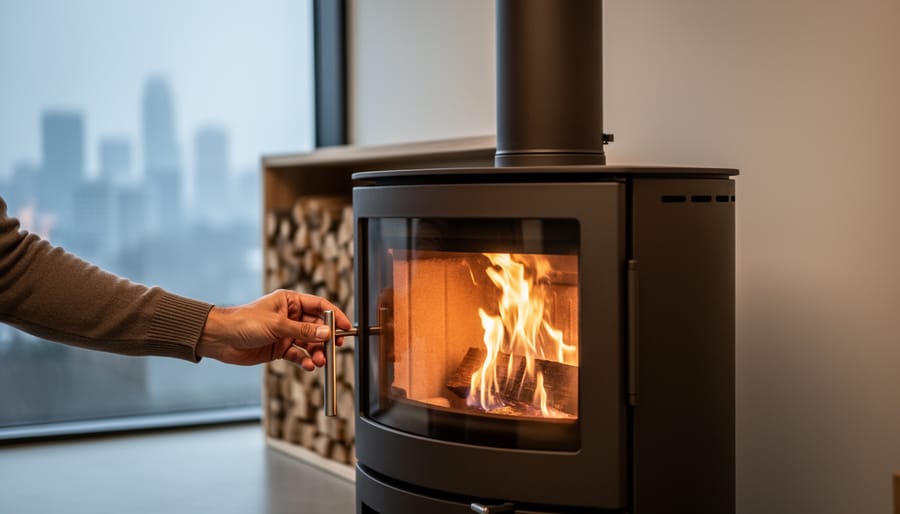Transform your home heating strategy with an outdoor wood stove – a powerful, cost-effective solution that can slash energy bills by up to 70% while providing sustainable warmth for your entire house. Among various outdoor stove options, wood-burning models stand out for their ability to heat spaces up to 3,500 square feet using readily available firewood, eliminating dependency on fluctuating fuel prices.
Modern outdoor wood stoves combine time-tested heating principles with advanced combustion technology, achieving remarkable efficiency rates above 80% while maintaining safer operating conditions than their indoor counterparts. By positioning the heat source outside, homeowners eliminate indoor smoke concerns, reduce fire risks, and gain valuable living space – all while maintaining consistent, comfortable temperatures through existing ductwork or hydronic systems.
Beyond immediate cost savings, these systems offer environmental benefits through carbon-neutral heating and support local wood suppliers, creating a sustainable heating cycle that benefits both homeowner and community. Whether you’re looking to reduce utility bills, increase home self-sufficiency, or embrace a more sustainable lifestyle, an outdoor wood stove represents a smart investment in your home’s heating future.
How Outdoor Wood Stoves Transform Home Heating
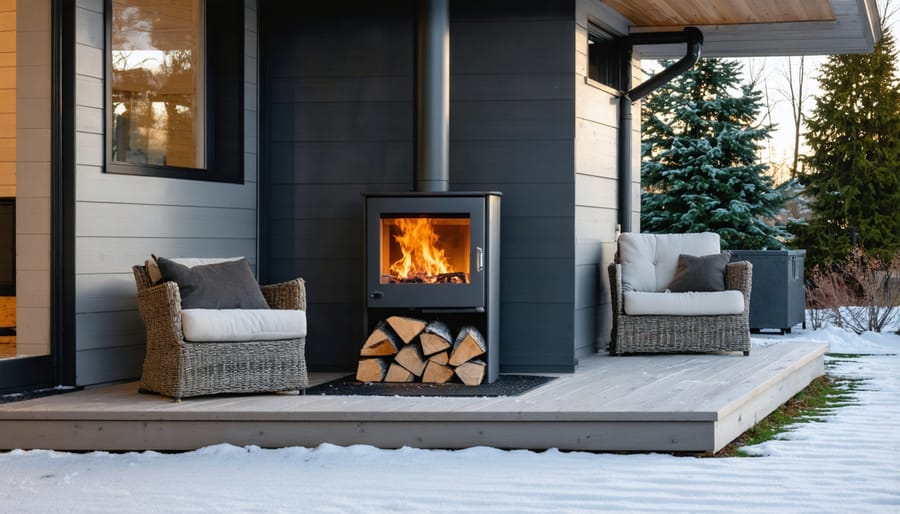
The Basic Components
An outdoor wood stove consists of several key components that work together to efficiently heat your home. At its core is the firebox, a robust metal chamber where wood is burned at high temperatures. This primary combustion chamber is typically lined with fire brick or high-grade steel to withstand intense heat and extend the stove’s lifespan.
Surrounding the firebox is a water jacket, essentially a sealed chamber filled with water that absorbs heat from the burning wood. This heated water then circulates through insulated underground pipes, connecting the outdoor unit to your home’s existing heating system.
The system includes a heat exchanger, which transfers warmth from the heated water to your home’s heating infrastructure, whether it’s forced air, radiant floor heating, or baseboards. A properly sized circulation pump ensures consistent water flow throughout the system.
At the top of the stove, you’ll find the chimney stack, which should be tall enough to create proper draft and meet local building codes. The unit also features an ash clean-out door at the bottom and a main loading door designed for easy wood insertion and maintenance.
Essential safety components include pressure relief valves, temperature gauges, and draft controls. Modern units often come equipped with digital controllers to monitor water temperature and regulate burning efficiency, making the system both safer and more convenient to operate.
Heat Distribution System
The heart of effective outdoor heating systems lies in their distribution network, which efficiently transfers heat from the outdoor stove to your home. This system typically consists of insulated underground pipes that carry heated water from the stove to your house. The pipes form a closed loop, with one pipe delivering hot water and another returning cooler water to be reheated.
Inside your home, this heat can be distributed through various methods, including existing radiators, baseboard heaters, or in-floor radiant heating systems. A heat exchanger transfers the warmth from the stove’s water to your home’s heating system without mixing the two water supplies. This setup ensures consistent, even heating throughout your living space.
Most modern systems include a pump that circulates the water continuously, maintaining optimal temperature levels. Advanced models feature thermostatic controls that automatically adjust water flow based on your home’s heating needs, making the system both efficient and convenient. Proper insulation of the underground pipes is crucial to minimize heat loss and maintain the system’s efficiency, especially during harsh winter conditions.
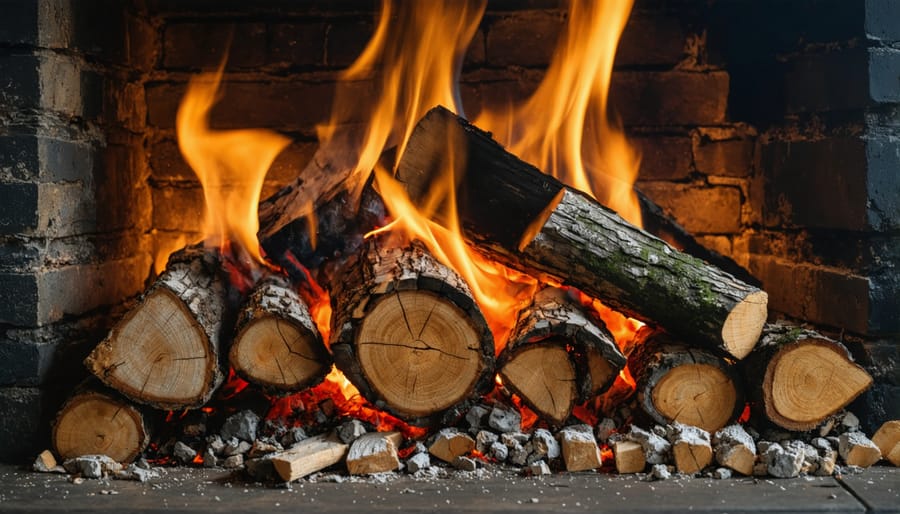
Selecting the Right Outdoor Wood Stove
Size and Heating Capacity
Selecting the right size outdoor wood stove is crucial for efficient home heating. As part of your backyard heating solutions, you’ll need to calculate your heating requirements carefully to ensure optimal performance.
To determine the appropriate size, start by calculating your home’s square footage. A general rule of thumb is that you’ll need about 25-30 BTUs (British Thermal Units) per square foot in colder climates, and 20-25 BTUs in moderate climates. For example, a 2,000-square-foot home in a cold region would require approximately 50,000-60,000 BTUs of heating capacity.
Consider these additional factors when sizing your stove:
– Insulation quality of your home
– Number and size of windows
– Ceiling height
– Local climate conditions
– Home’s age and construction materials
It’s better to choose a slightly larger capacity than you calculate, as this provides a buffer during extremely cold days. However, avoid oversizing by more than 25% as this can lead to inefficient operation and excessive fuel consumption.
Most residential outdoor wood stoves range from 100,000 to 400,000 BTUs. For average-sized homes (1,500-2,500 square feet), a 200,000 BTU unit typically provides adequate heating. Larger homes or those in severe winter climates may require models with higher capacities.
Efficiency Ratings
When considering an outdoor wood stove for heating your home, understanding efficiency ratings is crucial for making an informed decision and maximizing your investment. Modern outdoor wood stoves typically operate at efficiency rates between 70% and 85%, meaning they convert that percentage of wood energy into usable heat for your home.
The EPA (Environmental Protection Agency) has established strict efficiency standards for wood-burning appliances. Current regulations require new wood stoves to achieve at least 75% efficiency while producing no more than 2.0 grams of smoke per hour. These standards ensure that modern outdoor wood stoves are both environmentally responsible and cost-effective.
To interpret efficiency ratings effectively, look for the Overall Efficiency (OE) percentage, which indicates how much of the wood’s potential energy is converted to heat. Higher efficiency ratings mean less wood consumption and lower operating costs. For example, a stove with 80% efficiency will require significantly less firewood than one operating at 70% efficiency to produce the same amount of heat.
Several factors can impact your stove’s actual efficiency, including:
– Wood moisture content (should be below 20%)
– Proper installation and maintenance
– Quality of insulation in transfer lines
– Regular cleaning and upkeep
– Appropriate sizing for your heating needs
By choosing a high-efficiency outdoor wood stove and maintaining it properly, you can ensure optimal heat output while minimizing both fuel consumption and environmental impact.
Safety Features
When selecting an outdoor wood stove, safety should be your top priority. Modern outdoor wood stoves come equipped with several essential safety features that protect both your home and family. First, look for models with proper insulation and double-wall construction, which prevents the outer surface from becoming dangerously hot while maintaining efficient heat transfer.
A crucial safety element is the spark arrestor in the chimney system, which prevents hot embers from escaping and potentially causing fires. The stove should also include an automatic shutoff mechanism that activates if temperatures exceed safe levels or if the unit malfunctions.
Quality outdoor wood stoves feature pressure relief valves that prevent dangerous buildup within the system. Look for models with clearly visible temperature and pressure gauges that help you monitor the stove’s operation. Many modern units also come with built-in fire suppression systems and emergency water jackets.
Door safety is another critical consideration. Ensure the stove has a secure locking mechanism and heat-resistant handles. The viewing window, if present, should be made of high-temperature ceramic glass that can withstand extreme temperatures without cracking.
For added peace of mind, choose a model with proper certification from recognized safety organizations. These certifications ensure the stove meets strict safety standards and has undergone rigorous testing for both performance and safety.
Installation and Setup
Location Requirements
Proper placement of your outdoor wood stove is crucial for both safety and efficiency. The stove should be located at least 30-50 feet away from your house and any other structures, while still being close enough for convenient access during winter months. Consider prevailing wind patterns to minimize smoke drift towards your home or neighboring properties.
When selecting the perfect spot, ensure the ground is level and stable enough to support the unit, taking into account stove weight considerations. A concrete pad or reinforced foundation is typically necessary to provide adequate support and prevent settling over time.
Maintain proper clearances from combustible materials: at least 10 feet from trees, shrubs, and wooden structures. The chimney stack should extend at least 2 feet higher than any portion of your home within a 10-foot radius to ensure proper draft and minimize the risk of sparks landing on your roof.
Local building codes and regulations often dictate specific placement requirements, so check with your municipality before installation. Some areas require permits or have restrictions on outdoor wood stoves. Consider accessibility for wood delivery and storage, ensuring you have enough space to maintain a seasoned wood supply nearby.
The connection between the outdoor stove and your home’s heating system requires proper planning. Underground insulated pipes should follow the shortest possible route while maintaining appropriate slope for water return. This minimizes heat loss and ensures efficient operation throughout the heating season.
Connection to Your Home
Connecting your outdoor wood stove to your home requires careful planning and proper installation of a reliable heat transfer system. The most common method involves underground insulated piping that carries heated water from the stove to your home’s existing heating infrastructure.
The primary components of this system include insulated underground PEX piping, a water jacket within the stove, circulation pumps, and a heat exchanger. The PEX piping is specially designed to minimize heat loss during transfer and typically consists of two lines – one carrying hot water to your home and another returning cooler water to the stove.
Installation begins with trenching between your outdoor stove and home, ensuring the pipes are buried below the frost line to prevent freezing. The trenches should maintain a slight grade for proper water flow and drainage if needed. Most installations require a depth of 18-24 inches, though this may vary based on your climate zone.
Inside your home, the system connects to a heat exchanger that transfers warmth from the stove’s water to your existing heating system. This could be your forced-air furnace, radiant floor heating, or baseboards. A properly sized circulation pump ensures consistent water flow throughout the system.
To maximize efficiency, all underground pipes must be well-insulated, and connection points should be sealed against moisture. Many homeowners also install backup systems and temperature monitoring devices to ensure reliable heating during extreme weather conditions.
Remember to consult local building codes and obtain necessary permits before beginning installation. Working with a qualified HVAC professional can ensure your connection system meets safety standards and operates at peak efficiency.
Maintenance and Operation
Daily Operation Tips
To maximize your outdoor wood stove’s efficiency, follow these daily operation best practices. Start your morning fire with dry, seasoned wood and maintain an optimal heating temperature throughout the day. Layer your firewood strategically: place larger logs at the bottom and smaller pieces on top, with kindling and newspaper for easy ignition.
Monitor your fire every few hours, adding wood before it burns too low. This prevents temperature fluctuations and maintains consistent heat output. Keep the ash level in check by removing excess daily, leaving about an inch for insulation. A clean firebox promotes better airflow and more efficient burning.
Adjust your air intake controls based on outdoor temperatures and heating needs. During peak cold periods, open the damper wider for more intense heat. In milder weather, reduce airflow to extend burn time and conserve wood.
Always check your water jacket levels (if equipped) and ensure proper circulation through your heating system. Keep a supply of seasoned wood easily accessible, especially during stormy weather. Remember to clean the glass viewing window (if present) regularly to monitor flame quality and ensure complete combustion.
By following these daily practices, you’ll maximize heat output while minimizing wood consumption, making your outdoor wood stove both efficient and economical.
Seasonal Maintenance
Keeping your outdoor wood stove in top condition requires a consistent maintenance schedule throughout the year. As seasons change, different maintenance tasks become essential for optimal performance and safety.
In spring, start with a thorough cleaning of your stove and chimney after the heating season ends. Remove all ash and creosote buildup, and inspect the firebrick for any damage. This is also the perfect time to check door gaskets and seals, replacing them if they show signs of wear.
Summer maintenance focuses on protecting your stove from moisture. Apply a rust-preventive coating to external metal surfaces and ensure your wood storage area is properly covered. Take time to clean and organize your wood pile, moving seasoned wood to the front for easy access when fall arrives.
As autumn approaches, conduct a pre-season inspection of all components. Check the chimney cap, clean the flue, and test the damper operation. Ensure your thermometer is working correctly and verify that all safety devices are functioning properly.
Winter requires regular monitoring and maintenance. Clean the ash pan weekly, inspect the chimney monthly for creosote buildup, and keep snow and ice clear from the chimney top and wood storage area. Remember to check your carbon monoxide detectors regularly during the heating season.
Document all maintenance activities in a log book to track patterns and anticipate future needs. This systematic approach helps extend your stove’s lifespan and ensures safe, efficient operation year-round.
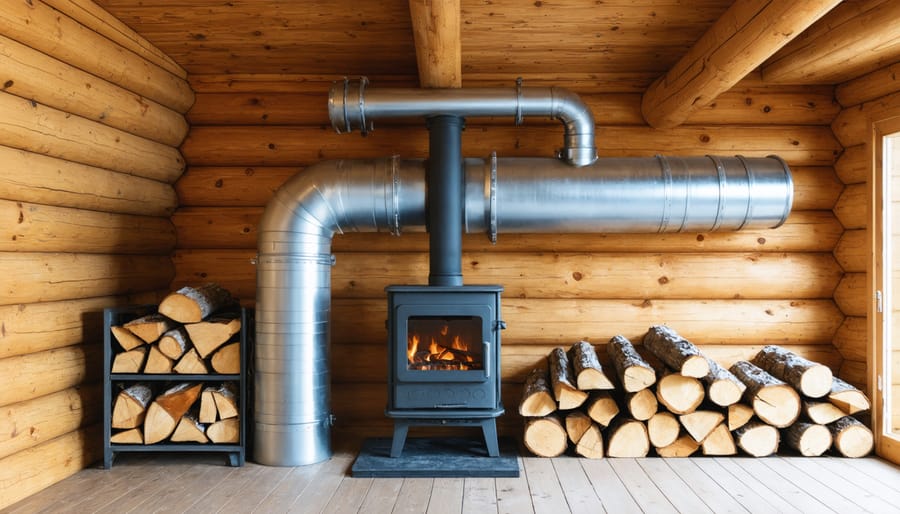
Troubleshooting Common Issues
Even well-maintained outdoor wood stoves can encounter issues, but most common problems have straightforward solutions. If you notice decreased heating efficiency, check for creosote buildup in your chimney and clean it thoroughly. Poor heat distribution often results from insufficient insulation in transfer pipes – adding proper insulation can quickly resolve this issue.
When experiencing smoke backflow into your home, inspect the chimney cap for blockages from leaves or debris. Also, ensure your chimney is tall enough to create proper draft. If the fire struggles to stay lit, check that your wood isn’t too wet – ideal moisture content should be below 20%.
Uneven heating throughout your home typically indicates circulation problems. Check that all pumps are functioning correctly and bleed your heating lines if necessary. For thermostat-related issues, verify proper calibration and battery life.
Strange noises from the system often signal air in the lines or pump problems. Regular maintenance and bleeding of the lines can prevent these issues. Remember, if you’re unsure about any repairs, it’s always safer to consult a professional technician.
An outdoor wood stove represents more than just a heating solution – it’s an investment in sustainable, efficient, and cost-effective home comfort. By choosing to heat your home with an outdoor wood stove, you’re embracing a time-tested method that offers numerous advantages over conventional heating systems.
The benefits are clear: significant savings on heating costs, reduced dependency on fossil fuels, and the satisfaction of heating your home with a renewable resource. You’ll enjoy consistent, powerful heat throughout your home while keeping smoke, ash, and fire hazards safely outside. The environmental impact is minimal when using properly seasoned wood, and many homeowners find the process of preparing and managing their wood supply both rewarding and therapeutic.
If you’re considering an outdoor wood stove, now is the perfect time to take action. Begin by assessing your property’s layout and heating needs, researching local regulations, and connecting with experienced installers in your area. Remember that while the initial investment may seem substantial, the long-term savings and benefits make it a worthwhile consideration for any homeowner looking to enhance their heating efficiency.
Take the first step toward energy independence and sustainable heating by exploring outdoor wood stove options for your home. With proper installation, regular maintenance, and safe operation, your outdoor wood stove can provide reliable heat for decades to come, making it a valuable addition to any home heating strategy. Start your journey toward more efficient, environmentally conscious home heating today.
